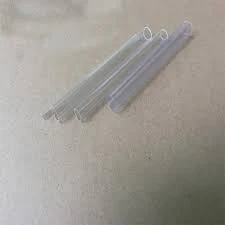Dec . 11, 2024 01:23 Back to list
Understanding the Benefits and Uses of HDPE Plastic Sheets in Various Applications
Understanding HDPE Plastic Sheets A Versatile Material for Various Applications
High-Density Polyethylene (HDPE) is one of the most widely used plastics in the world today. Recognized for its high strength-to-density ratio, HDPE is a type of thermoplastic made from petroleum. Its versatility and durability make it an ideal choice for a range of applications, from industrial purposes to consumer goods. This article delves into the characteristics, uses, and benefits of HDPE plastic sheets.
Characteristics of HDPE Plastic Sheets
HDPE plastic sheets are renowned for their exceptional properties that set them apart from other materials. They are resistant to impact, chemicals, and moisture, making them suitable for harsh environments. HDPE has a high tensile strength, enabling it to withstand heavy loads without deforming. Additionally, it exhibits excellent UV resistance, which allows it to maintain its integrity and color even when exposed to sunlight over extended periods.
Furthermore, HDPE is non-toxic and safe for food contact, which is why it is often used in the packaging industry. Its lightweight nature also contributes to its economical value, as it is easy to handle and transport. The sheets can be manufactured in various thicknesses, colors, and sizes, making them customizable to meet specific requirements.
Applications of HDPE Plastic Sheets
The applications of HDPE plastic sheets are vast and varied. In the commercial sector, they are frequently used in the construction of signs, barriers, and storage containers. Their weather-resistant properties make them ideal for outdoor applications, such as picnic tables, playground equipment, and landscaping features.
hdpe plastic sheets

In manufacturing, HDPE sheets serve as liners for chutes, hoppers, and conveyor systems due to their slick surface that reduces friction. They also find use in environmental applications, including landfill liners and caps, which help manage waste and prevent soil and groundwater contamination.
Moreover, HDPE plastic sheets are popular in the agricultural industry. They are employed for greenhouse covers, water tanks, and agricultural film due to their resistance to pesticides and fertilizers. The durability of HDPE ensures that products used in agriculture withstand the rigors of outdoor environments.
Benefits of Using HDPE Plastic Sheets
One of the primary benefits of HDPE plastic sheets is their recyclability. They can be reclaimed and recycled into new products, reducing plastic waste and contributing to sustainability efforts. The production of HDPE sheets uses fewer resources compared to other materials, with a reduced carbon footprint associated with their lifecycle.
Another advantage is the cost-effectiveness of HDPE sheets. Their long lifespan and low maintenance requirements make them a financially sound investment for businesses and consumers alike. Additionally, their ease of fabrication means that they can be cut, welded, or machined into various forms, thus expanding their usage potential.
Conclusion
In conclusion, HDPE plastic sheets are a remarkable material that offers a blend of durability, safety, and versatility. Their resistance to harsh environmental factors, combined with their recyclability, makes them an excellent choice for numerous applications across various industries. Whether used in construction, manufacturing, agriculture, or environmental protection, HDPE sheets continue to play a vital role in promoting efficiency and sustainability. As industries evolve and the demand for eco-friendly materials rises, HDPE is poised to maintain its prominence as a reliable and effective solution for countless applications.
-
High-Quality PPR Pipes and Fittings Durable ERA PPR & PVC PPR Solutions
NewsJul.08,2025
-
Black HDPE Cutting Board - Durable, Non-Porous & Food Safe HDPE Plastic Cutting Board
NewsJul.08,2025
-
High-Quality CPVC Panel Durable HDPE & PVC Panels Supplier
NewsJul.08,2025
-
Double PE Welding Rod Supplier - High Strength, Durable & Versatile Welding Solutions
NewsJul.07,2025
-
High-Quality PVC-O Pipe Supplier Durable 75mm PVC Pipe & Connections Leading PVC Pipe Company
NewsJul.07,2025
-
HDPE Drainage Pipe Supplier – Durable & Corrosion-Resistant Solutions
NewsJul.06,2025

